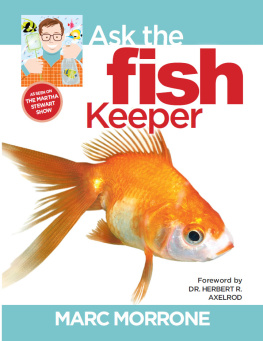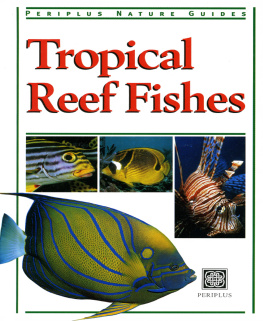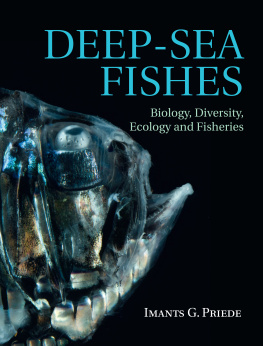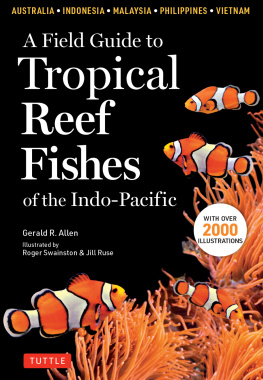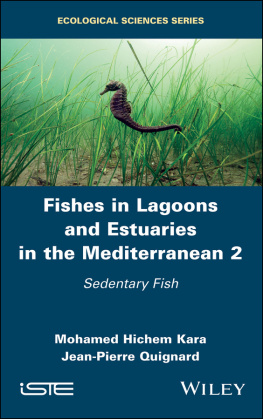Fishes: The Animal Answer Guide
Fishes
The Animal Answer Guide
Gene Helfman and Bruce Collette

2011 The Johns Hopkins University Press
All rights reserved. Published 2011
Printed in the United States of America on acid-free paper
9 8 7 6 5 4 3 2 1
The Johns Hopkins University Press
2715 North Charles Street
Baltimore, Maryland 21218-4363
www.press.jhu.edu
Library of Congress Cataloging-in-Publication Data
Helfman, Gene S.
Fishes : the animal answer guide / Gene Helfman and Bruce Collette.
p. cm.
Includes bibliographical references and index.
ISBN-13: 978-1-4214-0222-2 (hardcover : alk. paper)
ISBN-10: 1-4214-0222-X (hardcover : alk. paper)
ISBN-13: 978-1-4214-0223-9 (pbk. : alk. paper)
ISBN-10: 1-4214-0223-8 (pbk. : alk. paper)
1. FishesMiscellanea. I. Collette, Bruce B. II. Title.
QL617.H35 2011
597dc22 2011008289
A catalog record for this book is available from the British Library.
All photos are by Gene Helfman unless otherwise indicated.
Special discounts are available for bulk purchases of this book. For more information, please contact Special Sales at 410-516-6936 or specialsales@press.jhu.edu.
The Johns Hopkins University Press uses environmentally friendly book materials, including recycled text paper that is composed of at least 30 percent post-consumer waste, whenever possible.
All is ichthyological in design, if not intent.
JOHN FAHEY
Acknowledgments
Our answers to many of the questions in this book are based on knowledge gained while writing a college-level ichthyology textbook, The Diversity of Fishes. We are therefore grateful to our coauthors in that project, Doug Facey of Saint Michaels College and Brian Bowen of the University of Hawaii for their efforts in that venture. Our work here would have been much more laborious without their help. In many ways, they are also coauthors of this guide.
We remain indebted to our professional colleagues and mentors to whom we have turned innumerable times for answers both ichthyological and more general: George Barlow, J. B. Heiser, Dave Johnson, William McFarland, Lynne Parenti, Jack Randall, Vic Springer, Rich Vari, and Stan Weitzman.
For permission to use illustrations and for providing information on various subjects we thank Cecil Berry, Lauren and Colin Chapman, Joe DeVivo, Bud Freeman, David Hall, Jean-Francois Healias, Malia and Devon Helfmeyer, Zeb Hogan, Mike Horn, Dave Johnson, Michael Kanzler, Stephanie Madsden, Matthew McDavitt, Alexandra Morton, Ted Pietsch, Phil Pister, Rich Pyle, Sandra Reardon, Tyson Roberts, Dave Sumang, Paul Vecsei, Ali Watters, and John Wourms.
Our thanks to Vincent Burke and Jennifer Malat of the Johns Hopkins University Press for trusting us to complete this and tolerating our moments of unreasonableness, usually in good humor. They deserve more cooperative if not compliant authors.
We happily dedicate this work to our wives, Judy Meyer and Sara Collette, in gratitude for their encouragement and unstinting patience in light of other responsibilities that were neglected. We promise to make up for it, soon.
Introduction
Bruce Collette and I have both been fascinated by animals, especially fishes, since we were young. I had my first aquarium before I was 10, and by high school in Van Nuys, California, my bedroom was a chaos of tanks, pumps, heaters, and bubbling noises. With encouragement from my biology teachers, a couple of other fellow fish nuts and I started a shark research group. We collected spiny dogfish for a professor at UCLA who was interested in blood chemistry, spending all-nighters on fishing barges off Redondo Beach, catching sharks for science. We were on top of the world.
In college at UC Berkeley, I got more serious about fishes, learned to scuba dive, and managed the Zoology Departments fish collection. I took ichthyology from the late Dr. George Barlow, an animal behaviorist, which got me started observing fish behavior. Upon graduating, I joined the Peace Corps in Palau, Western Caroline Islands, as a fisheries specialist. Palau has spectacular coral reefs and I spent most work hours and every weekend diving, catching, and watching fishes.
After graduate school at the University of Hawaii and Cornell University (lots more fish watching for science), I was hired at the University of Georgia in Athens, as an ichthyologist, where I taught Ichthyology, Animal Behavior, and Conservation Biology for 30 years. I study marine and freshwater fishes, mostly by diving and observing predator-prey interactions. In recent years Ive focused on conservation because many of the places I visited early in my career have deteriorated, as have their fishes.
Bruce Collettes interest in animals began during summers at a camp in the Adirondack Mountains. In high school on Long Island, he experimented with color change in frogs; during vacations from his undergraduate days at Cornell University, he studied lizard behavior and morphology while visiting his parents in Cuba. Bruce switched to fishes in graduate school at Cornell and received his Ph.D. for a taxonomic study of a large group of freshwater fishes called darters that live in streams and rivers from Maine to Florida.
In 1960, Bruce accepted a position as an ichthyologist at the National Systematics Laboratory in what is now the National Marine Fisheries Service of the National Oceanographic and Atmospheric Agency, housed in the National Museum of Natural History of the Smithsonian Institution in Washington, D.C.
Bruces research focuses on the anatomy, systematics, evolution, and bio-geography of tunas and their relatives plus other fishes such as halfbeaks, needlefishes, and toadfishes. His research entails visiting major fish collections around the world, collecting expeditions on various vessels, and using scuba to collect and observe fishes. Results of his research have been published in over 250 papers in many scientific journals plus two regional fish guides, The Fishes of Bermuda and Bigelow and Schroeders Fishes of the Gulf of Maine. Bruce has also taught ichthyology as a summer field course in Massachusetts, Bermuda, and Maine.
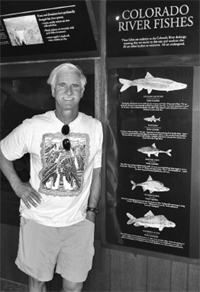
Gene Helfman learning about Colorado River fishes at the Sonoran Desert Museum, Tucson, Arizona. Photo by J. L. Meyer

Bruce Collette shows an Atlantic Bluefin Tuna skull to a young visitor to the Sant Ocean Hall of the Smithsonian Institution. Photo by Mike Vecchione
Bruce and I have known each other for probably 25 years. Given our very different research specialties but our common passion for fishes, we cover much of the broad topic of ichthyology. In 1997 we published an ichthyology textbook, The Diversity of Fishes: Biology, Evolution, and Ecology, now in its second (2009) edition and the most widely used college-level ichthyology text in the world. But its approach is too technical for a general audience, so we were delighted when the Johns Hopkins University Press asked us to write a fish book for their Animal Answer Guide series. Fishes are just too interesting and important to be reserved for college students. We would have loved to find a book such as this one when our fascination in fishes was new. We hope this book answers questions and sparks the kind of excitement about these wonderful animals that we have felt for so long.
Next page



